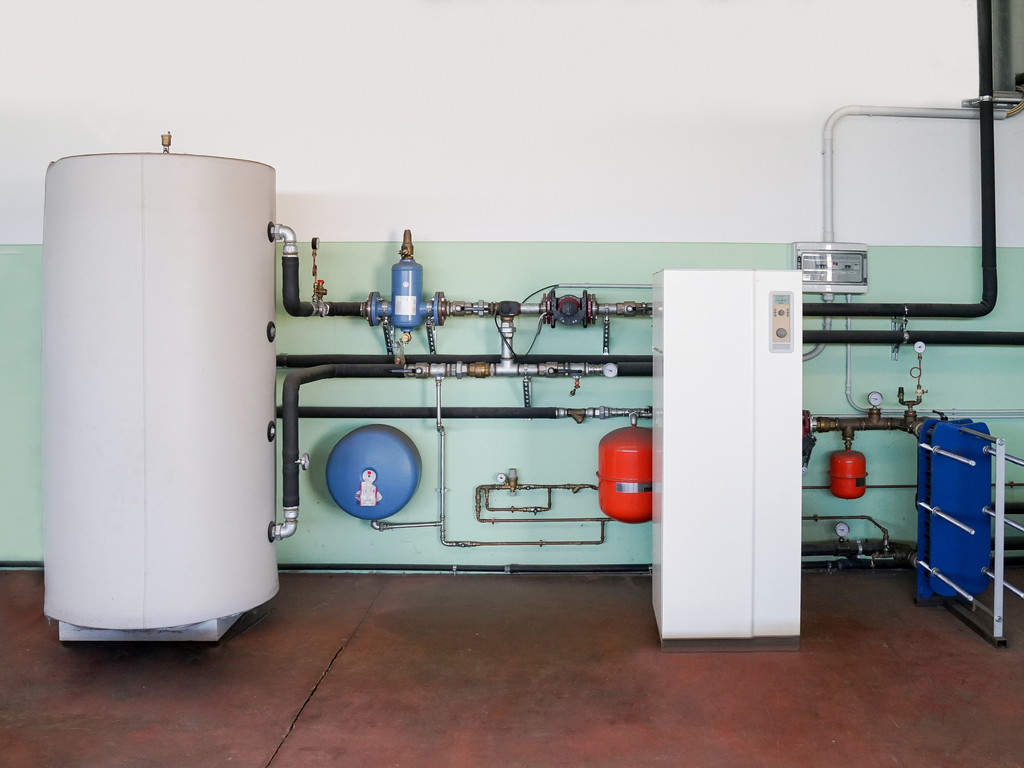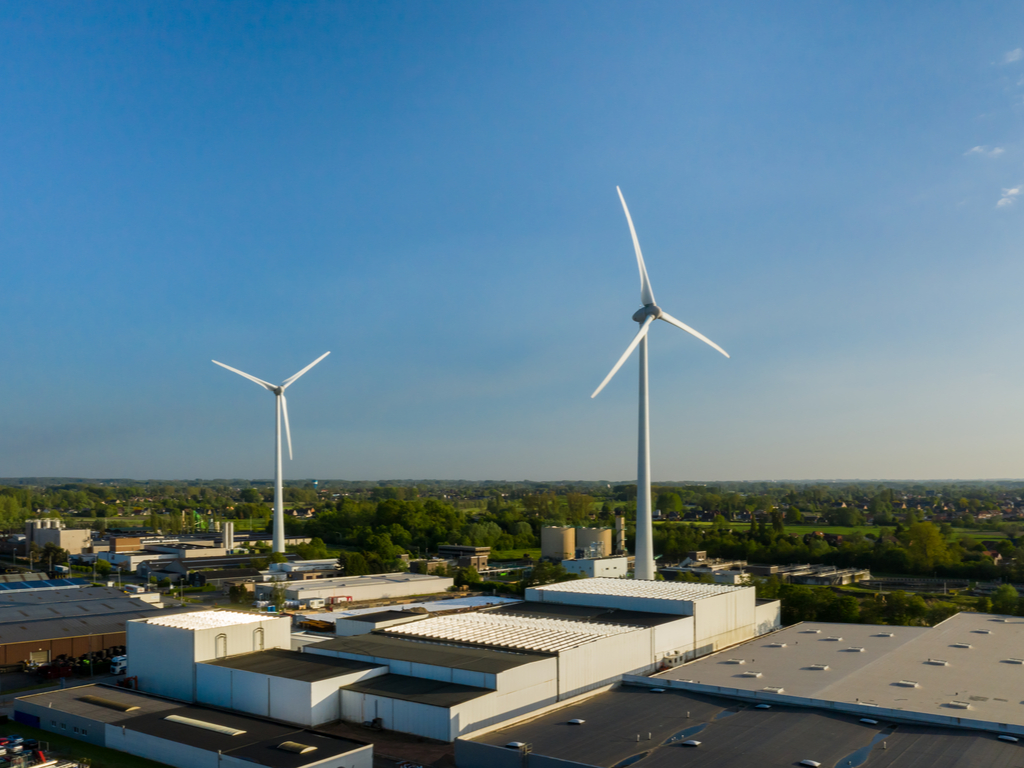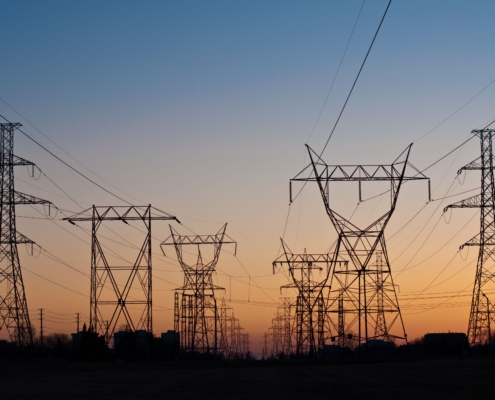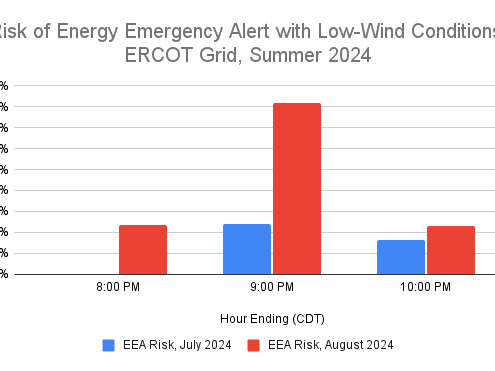Last Updated on March 8, 2024 by Mary Pressler
5 Renewable Energy Options for Commercial Buildings
According to the US Energy Information Administration, the five main renewable energy sources are solar energy, geothermal energy, wind energy, biomass and hydropower. However, the definition of renewable energy is a topic of debate; for example nuclear energy is considered renewable by some organizations and nonrenewable by others.
The following table summarizes US energy consumption by source, considering both renewable and nonrenewable sources. Keep in mind that this breakdown considers all forms of energy consumption (not only power grids):
| Energy Source | US Consumption Percentage |
| Petroleum | 34.7% |
| Natural gas | 33.9% |
| Coal | 9.9% |
| Nuclear | 8.9% |
| Biomass | 4.9% |
| Wind | 3.2% |
| Hydropower | 2.8% |
| Solar | 1.3% |
| Geothermal | 0.2% |
All renewable sources can be used by homes and businesses when their electricity is delivered through the grid. However, many building owners are interested in having their own renewable energy systems. Depending on site conditions and the resources at your disposal, the ideal technology for your property can vary.
Here we will discuss some options for the integration of renewable energy in buildings, using the five main sources listed by the US EIA.
1) Solar Energy
Among all renewable sources, solar energy is the least demanding in terms of site conditions, making it the most viable option for most buildings. All you need is a large enough area that is not covered by shadows, and a suitable roof structure in the case of rooftop installations.
Energy consultants will normally recommend solar energy systems as the first option for buildings, since they can be implemented with relative ease. Homeowners and businesses have two main ways to harness the sun’s energy:
- Generating electricity with solar photovoltaic panels.
- Heating water with solar thermal collectors.
Using a solar thermal collector to drive a heat engine and generator is also an option. However, when you want to generate electricity with sunlight, photovoltaic panels are more cost-effective in most applications.
Solar photovoltaic power is America’s fastest growing electricity source. The country will add 21.5 GW in 2022 according to the US EIA, representing 46% of all generation capacity installed during the year. Solar power qualifies for a 26% federal tax credit, and additional incentives may be available depending on where you live. For example, Oncor offers an incentive of up to $9,000 for home solar systems, and up to $120,000 for commercial arrays.
2) Geothermal Energy
Underground heat is also a viable energy source, and it can be used for building heating or power generation. However, there are important differences between both applications.
Geothermal power plants require very high underground temperatures, and the typical depth of their wells is two miles or more. Developers must find places where drilling to this depth is viable, and the best sites are generally found near volcanoes. Geothermal generation is very demanding in terms of site conditions, and upfront costs are very high. Therefore, this is not a viable option for commercial buildings.
Geothermal heating and cooling is much more viable in homes and businesses, since the excavation depths required are much lower. According to the US Department of Energy, the typical depth required for geothermal heat pumps is 4 feet or more in residential systems, and 100-400 feet in large buildings.
Geothermal heat pumps are also known as ground-source heat pumps. They can extract underground heat for your building during winter, which is more efficient than using a resistance heater. These systems can also be designed to operate as air conditioners during summer, where the underground is actually cooler than outdoor air. In this case, heat is extracted from your building and released underground.
- In cooling mode, a ground-source heat pump is more efficient than most air conditioning systems.
- In heating mode, a ground-source heat pump is more efficient than a resistance heater.
A heat pump only consumes electricity, requiring no oil or gas combustion like boilers and furnaces. Heat pumps achieve synergy with other renewable sources, which can be used to generate the electricity they need.

Geothermal heat pump in the boiler room
3) Wind Energy
Wind power is the top renewable source in Texas, with over 38,000 MW of installed capacity. However, most wind turbines are part of utility-scale projects. Unlike solar panels, which are viable at all project scales, wind turbines are more cost-effective at large scale.
- As the height from ground level increases, wind conditions improve because there are less obstacles. The wind becomes more stable, and average speeds are higher.
- As a result, a large wind turbine with a tall mast will be more productive than many smaller turbines of the same total capacity.
- For example, a single 2,000-kW turbine in the middle of a field will be much more productive than 100 smaller turbines rated at 20 kW each.
Generally, wind power is not viable in urban areas. Natural wind currents are disrupted by the large number of buildings, leading to an unstable power output. Also, there are many places where wind turbines are forbidden by zoning regulations. However, if your company operates in a rural location with adequate wind conditions, investing in a large turbine can be viable.
If you live in Texas or another state with deregulated electricity, you can use wind power without having a turbine directly on your building. There are electricity providers who offer 100% wind power plans, and you can compare several options at Quick Electricity.
4) Hydroelectricity
Hydroelectricity is one of the most reliable electricity sources, since you can hold water in a reservoir and generate power at any time. Hydroelectric turbines are also characterized by their quick response, and they can easily ramp up generation when power demand increases suddenly.
Unfortunately, owning a hydropower plant is not an option for the vast majority of building owners. The project requires a property with a river flowing through, and also adequate terrain conditions to set up the turbines and generators. However, small-scale hydropower can be an option for rural properties with flowing water.
5) Biomass
Biomass energy is a very broad term that covers many systems and technologies. However, the basic principle is extracting energy from organic material. One example of biomass energy is burning wood for heating purposes, which has been done for centuries. The US EIA classifies biomass sources into five types: crops, garbage, alcohol fuels, landfill gas and wood.
In general, biomass power is viable for building owners who have access to large amounts of organic waste. There are many chemical and biological processes that can be used to produce biogas or biodiesel from organic material. When this process is viable, biomass can be used not only for power generation, but also for transportation and combustion heating.
Depending on site conditions and the availability of biomass sources, project costs can vary significantly. Generally, biomass power is viable in sectors like agriculture or textiles, where large volumes of organic material are available for companies.
Bonus: Energy Storage Systems
Strictly speaking, energy storage systems are not a renewable source. However, the ability to store electricity for later use is very helpful in many applications.
- Hydroelectricity and biomass power can be used at any time, since their energy inputs can be stored. Geothermal power is always available when you have a favorable site.
- On the other hand, wind turbines and solar panels cannot generate power on demand, since their energy inputs are variable.
Solar and wind power are also the fastest growing renewable sources in the US, and managing their variable nature is a technical challenge. However, energy storage is the ideal solution: surplus production from solar panels and wind turbines can be stored, and this resource becomes available when power demand is high.
With energy storage systems, variable renewable sources can also compete better with fossil fuels. Coal and natural gas can be used at any time, while sunlight and wind conditions are always changing. However, the combination of renewable sources and energy storage can achieve a 24/7 power output.










